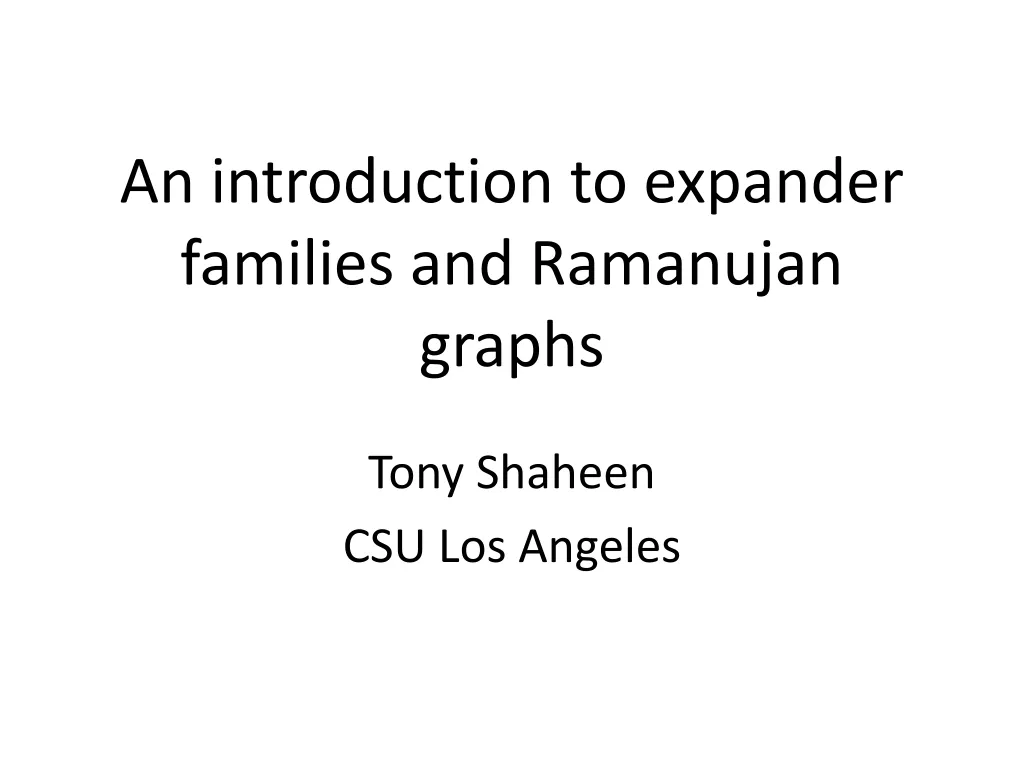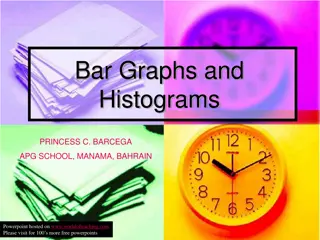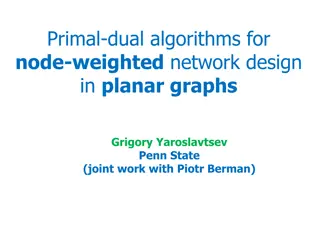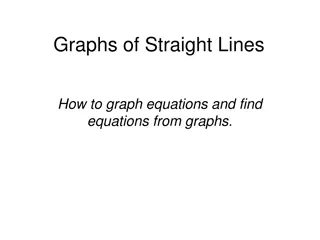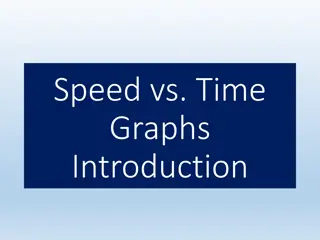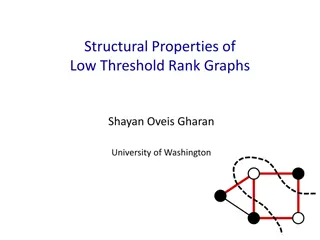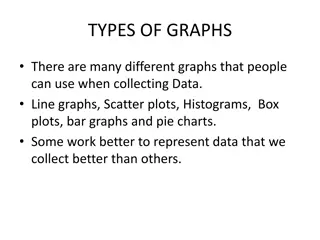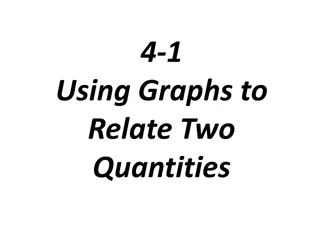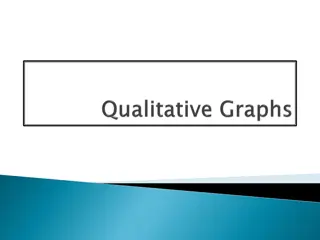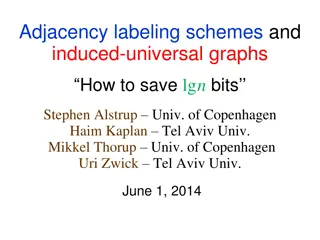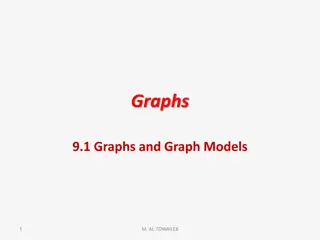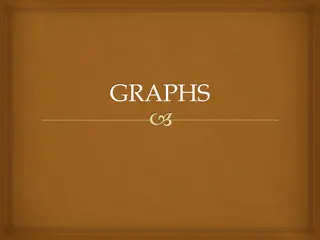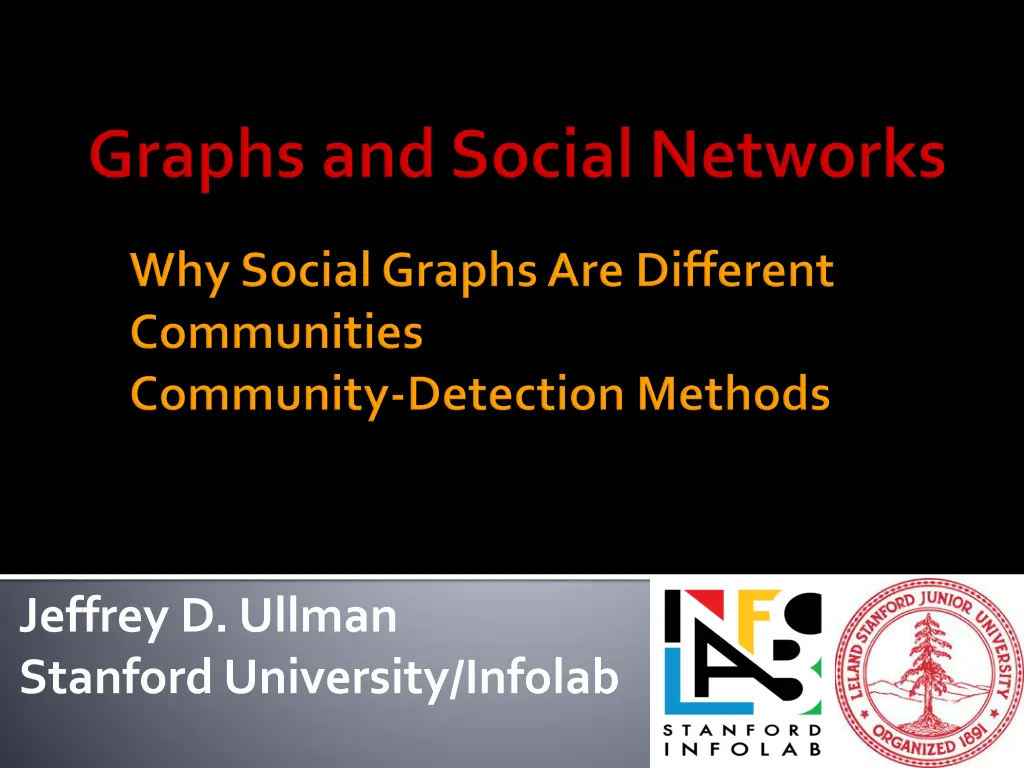
Understanding Graph Theory: Structures and Properties
Explore the fundamentals of graph theory, including directed and undirected graphs, locality, small-world properties, and community structures. Learn how graphs exhibit different properties and how they can be used to model various real-world scenarios.
Uploaded on | 0 Views
Download Presentation

Please find below an Image/Link to download the presentation.
The content on the website is provided AS IS for your information and personal use only. It may not be sold, licensed, or shared on other websites without obtaining consent from the author. If you encounter any issues during the download, it is possible that the publisher has removed the file from their server.
You are allowed to download the files provided on this website for personal or commercial use, subject to the condition that they are used lawfully. All files are the property of their respective owners.
The content on the website is provided AS IS for your information and personal use only. It may not be sold, licensed, or shared on other websites without obtaining consent from the author.
E N D
Presentation Transcript
Jeffrey D. Ullman Stanford University/Infolab
Graphs can be either directed or undirected. Example: The Facebook friends graph (undirected). Nodes = people; edges between friends. Example: Twitter followers (directed). Nodes = people; arcs from a person to one they follow. Example: Phonecalls (directed, but could be considered undirected as well). Nodes = phone numbers; arc from caller to callee, or edge between both. 2
1. Locality (edges are not randomly chosen, but tend to cluster in communities ). 2. Small-world property (low diameter = maximum distance from any node to any other). 3
A graph exhibits locality if when there is an edge from x to y and an edge from y to z, then the probability of an edge from x to z is higher than one would expect given the number of nodes and edges in the graph. Example: On Facebook, if y is friends with x and z, then there is a good chance x and z are friends. Community = set of nodes with an unusually high density of edges. 4
Many very large graphs have small diameter (maximum distance between two nodes). Called the small world property. Example: 6 degrees of Kevin Bacon. Example: Erdos numbers. Example: Most pairs of Web pages are within 12 links of one another. But study at Google found pairs of pages whose shortest path has a length about a thousand. 5
1. Partition the graph into disjoint communities such that the number of edges that cross between two communities is minimized (subject to some constraints). Question for thought: what would you do if you only wanted to minimize edges between communities? 2. Construct overlapping communities: a node can be in 0, 1, or more communities, but each community has many internal edges. 7
Used to partition a graph into reasonable communities. Roughly: the betweenness of an edge e is the number of pairs of nodes (A,B) for which the edge e lies on the shortest path between A and B. More precisely: if there are several shortest paths between A and B, then e is credited with the fraction of those paths on which it appears. Edges of high betweenness separate communities. 8
A B D E C G F Edge (B,D) has betweenness = 12, since it is on the shortest path from each of {A,B,C} to each of {D,E,F,G}. Edge (G,F) has betweenness = 1.5, since it is on no shortest path other than that for its endpoints and half the shortest paths between E and G. 9
1. Perform a breadth-first search from each node of the graph. 2. Label nodes top-down (root to leaves) to count the shortest paths from the root to that node. 3. Label both nodes and edges bottom-up with sum, over all nodes N at or below, of the fraction of shortest paths from the root to N, passing through this node or edge. 4. The betweenness of an edge is half the sum of its labels, starting with each node as root. Half to avoid double-counting each path. 10
BFS starting at E 1 Label of root = 1 A B D E E 1 1 C G F F D 1 Label of other nodes = sum of labels of parents 2 G B 1 1 A C 11
1 A B D E E 4.5 1.5 1 1 1.5 C G F 4.5 3 F D Interior nodes get 1 plus the sum of the edges below 0.5 0.5 1 2 3 G B 1 Split of G s label is according to the path counts (black labels) of its parents D and F. 1 1 Edges get their share of their children 1 1 A C 1 1 Leaves get label 1 12
1 A B D E E 4.5 1.5 1 1 1.5 C G F 4.5 3 F D 0.5 0.5 1 2 3 Edge (D,E) has label 4.5. G B 1 This edge is on all shortest paths from E to A, B, C, and D. 1 1 1 1 It is also on half the shortest paths from E to G. A C 1 1 But on none of the shortest paths from E to F. 13
12 5 4.5 A B D E 4 1.5 4.5 1 5 C G F 1.5 14
5 4.5 A B D E 4 1.5 4.5 1 5 C G F 1.5 A sensible partition into communities 15
4.5 A B D E 4 1.5 4.5 1 C G F 1.5 Why are A and C closer than B? B is a traitor to the community, being connected to D outside the group. 16
1. Algorithm can be done with each node as root, in parallel. 2. Depth of a breadth-first tree is no greater than the diameter of the graph. 3. One MapReduce round per level suffices for each part. 17
Recall a community in a social graph is a set of nodes that have an unusually high number of edges among those nodes. Example: A family (mom+dad+kids) might form a complete subgraph on Facebook. In addition, more distant relations (e.g., cousins) might be connected to many if not all of the family members and frequently connected to each other. 19
One approach to finding communities is to start by finding cliques = sets of nodes that are fully connected. Grow a community from a clique by adding nodes that connect to many of the nodes chosen so far. Prefer nodes that add more edges. Keep the fraction of possible edges that are present suitably high. May not yield a unique result. May produce overlapping communities. 20
A B D E C G F Start with 3-clique {D, F, G}. Can add E, and the fraction of edges present becomes 5/6. Better than adding B to {D, F, G}, because that would result in an edge fraction of only 4/6. And adding B to {D, E, F, G} would give a fraction 6/10, perhaps too low. 21
1. Finding largest cliques is highly intractable. 2. Large cliques may not exist, even if the graph is very dense (most pairs of nodes are connected by an edge). Strangely, a similar approach based on bi- cliques (two sets of nodes S and T with an edge from every member of S to every member of T) works. We can grow a bi-clique by adding more nodes, just as we suggested for cliques. 22
Its an application of frequent itemsets. Think of the nodes on the left as items and the nodes on the right as baskets. If we want bi-cliques with t nodes on the left and s nodes on the right, then look for itemsets of size t with support s. Note: We find frequent itemsets for the whole graph, but we ll argue that if there is a dense community, then the nodes of that community have a large bi-clique. 24
Divide the nodes of the graph randomly into two equal-sized sets ( left and right ). For each node on the right, make a basket. For each node on the left make an item. The basket for node N contains the item for node M iff there is an edge between N and M. Key points: A large community is very likely to have about half its nodes on each side. And there is a good chance it will have a fairly large bi-clique. Question for thought: Why? 25
Suppose we have a community with 2n nodes, divided into left and right sides of size n. Suppose the average degree of a node within the community is 2d, so the average node has d edges connecting to the other side. Then a basket (right-side node) with di items generates about itemsets of size t. Minimum number of itemsets of size t is generated when all di s are the same and therefore = d. That number is n . di t ( ) d t ( ) 26
n Total number of itemsets of size t is . Average number of baskets per itemset is at least n / . Assume n > d >> t, and we can approximate the average by n(d/n)t. At least one itemset of size t must appear in an average number of baskets, so there will be an itemset of size t with support s as long as n(d/n)t > s. Uses approximation x choose y is about xy/y! when x >> y. t ( ) d n t ( ) t ( ) 27
Suppose there is a community of 200 nodes, which we divide into the two sides with n = 100 each. Suppose that within the community, half of all possible edges exist, so d = 50. Then there is a bi-clique with t nodes on the left and s nodes on the right as long as 100(1/2)t > s. For instance, (t, s) could be (2, 25), (3,13), or (4, 6). 28
As with betweenness approach, we want to divide a social graph into communities with most edges contained within a community. A surprising technique involving the eigenvector with the second-smallest eigenvalue serves as a good heuristic for breaking a graph into two parts that have the smallest number of edges between them. Can iterate to divide into as many parts as we like. 30
1. Degree matrix: entry (i, i) is the degree of node i; off-diagonal entries are 0. 2. Adjacency matrix: entry (i, j) is 1 if there is an edge between node i and node j, otherwise 0. 3. Laplacian matrix = degree matrix minus adjacency matrix. 31
A B C D 1 0 0 0 0 2 0 0 0 0 2 0 0 0 0 1 0 1 0 0 1 0 1 0 0 1 0 1 0 0 1 0 1 -1 0 0 -1 2 -1 0 0 -1 2 -1 0 0 -1 1 Degree matrix Adjacency matrix Laplacian matrix 32
Proof: Each row has a sum of 0, so Laplacian L multiplying an all-1 s vector is all 0 s, which is also 0 times the all-1 s vector. Example: 1 -1 0 0 -1 2 -1 0 0 -1 2 -1 0 0 -1 1 1 1 1 1 1 1 1 1 = 0 33
Let L be a Laplacian matrix, so L = D A, where D and A are the degree matrix and adjacency matrix for some graph. The second eigenvector x can be found by minimizing xTLx subject to the constraints: 1. The length of x is 1. 2. x is orthogonal to the eigenvector associated with the smallest eigenvalue. The all-1 s vector for Laplacian matrices L. And the minimum of xTLx is the eigenvalue. 34
Let the i-th component of x be xi. Aside: Constraint that x is orthogonal to all-1 s vector says sum of xi s = 0. Break up xTLx as xTLx = xTDx xTAx. Since D is diagonal, with degree di as i-th diagonal entry, Dx = vector with i-th element dixi. Therefore, xTDx = sum of dixi2. i-th component of Ax = sum of xj s where node j is adjacent to node i. xTAx = sum of -2xixj over all adjacent i and j. 35
Now we know xTLx = i dixi2i,j adjacent 2xixj. Distribute dixi2 over all nodes adjacent to node i. Gives us xTLx = i,j adjacent xi2- 2xixj + xj2 = i,j adjacent (xi-xj)2. Remember: we re minimizing xTLx. The minimum will tend to make xi and xj close when there is an edge between i and j. Also, constraint that sum of xi s = 0 means there will be roughly the same number of positive and negative xi s. 36
Put another way: if there is an edge between i and j, then there is a good chance that both xi and xj will be positive or both negative. So partition the graph according to the sign of xi. Likely to minimize the number of edges with one end in either side. 37
A B C D 1 -1 0 0 -1 2 -1 0 0 -1 2 -1 0 0 -1 1 2 1 -1 1- -1 2- 3 -4 4-3 2 .586 .242 -.242 -.586 2 2 = = 2 2 -2 Laplacian matrix Puts A and B in the positive group, C and D in the negative group. Eigenvalues: 0, 2- , 2, 2+ 2 2 38
We are given a graph and a set of communities. We want to find a model that best explains the edges in the graph, assuming: 1. Nodes (people) can be in any subset of the communities. 2. For each community C, there is a probability pC that this community will cause there to be an edge between two members. 3. Each community independently inspires edges. 40
Consider two nodes i and j, both members of communities C and D, and no others. The probability that there is no edge between i and j is (1-pC)(1-pD). Thus, the probability of an edge (i, j) is 1 - (1-pC)(1-pD). Generalizes to 1 minus the product of 1-pC over all communities C containing both i and j. Tiny if i and j do not share any communities. Else there is no way to explain an edge not contained in any community. 41
Given a graph and a tentative assignment of nodes to sets of communities, we can compute the likelihood of the graph by taking the product of: 1. For each edge in the graph, the probability this assignment would cause this edge. 2. For each pair of nodes not connected by an edge, 1 minus the probability that the assignment would cause an edge between these nodes. 42
2 Technically this is 1 (1-pC). 4 1 3 C D p12 = p13 = pC p23 = 1 (1-pC)(1-pD) Likelihood of this graph = p12p13p23p24(1-p14)(1-p34) = (pC)2(1 (1-pC)(1-pD))pD(1- )(1-pD) p24 = p34 = pD p14 = Very close to 1; drop this factor 43
Given our assignment to communities, we can find the probability pC associated with each community C that maximizes the probability of seeing this graph. Find maximum by gradient descent; i.e., change each pC slightly in the direction that the partial derivative wrt this variable says will increase the likelihood expression. Iterate to convergence. 44
2 For this likelihood expression (pC)2(1 (1-pC)(1-pD))pD(1-pD) first notice that increasing pC can only increase the expression. Thus, choose pC = 1. Expression becomes pD(1-pD). Maximized when pD = . Question for thought: given pC = 1 and pD = , what graphs could possibly be generated and what are their probabilities? 4 1 3 C D 45
The general idea is that we maximize a function of many variables by: 1. Take the partial derivative of the function with respect to each variable. 2. Evaluate the derivatives at the current point (values of all the variables). 3. Change the value of each variable by a small fraction of its partial derivative to get a new point. 4. Repeat (1) (3) until convergence. 46
Suppose we start at the point pC = .7, pD = .6 The derivative of (pC)2(1 (1-pC)(1-pD))pD(1-pD), with pC a variable and pD = .6 is .288pC + .288pC 2. Evaluated at pC = .7 is .34272. The derivative with pD variable and pC = .7 is .343 - .392pD - .441pD2. Evaluated at pD = .6 is -.05096. We might then add 10% of their derivatives to pC and pD, yielding pC = .734272 and pD = .594904. 47
While gradient descent is dandy for finding the best pC values given an assignment of nodes to communities, it doesn t help with optimizing that assignment. Classical approach is to allow incremental changes to a discrete value such as the node- community assignment. Example: allow changes that add or delete one node from one community; see if it gives a higher likelihood for its best pC values. 48
An alternative is to make membership in communities a continuous so you can use gradient descent to optimize them. Create a variable FxC for each node x and community C that represents the degree to which x is a member of community C. Probability that community C will cause an edge between nodes u and v is taken to be 1-exp{-FuCFvC}. Probability of an edge is constructed from the contributions of all the communities as before. 49

